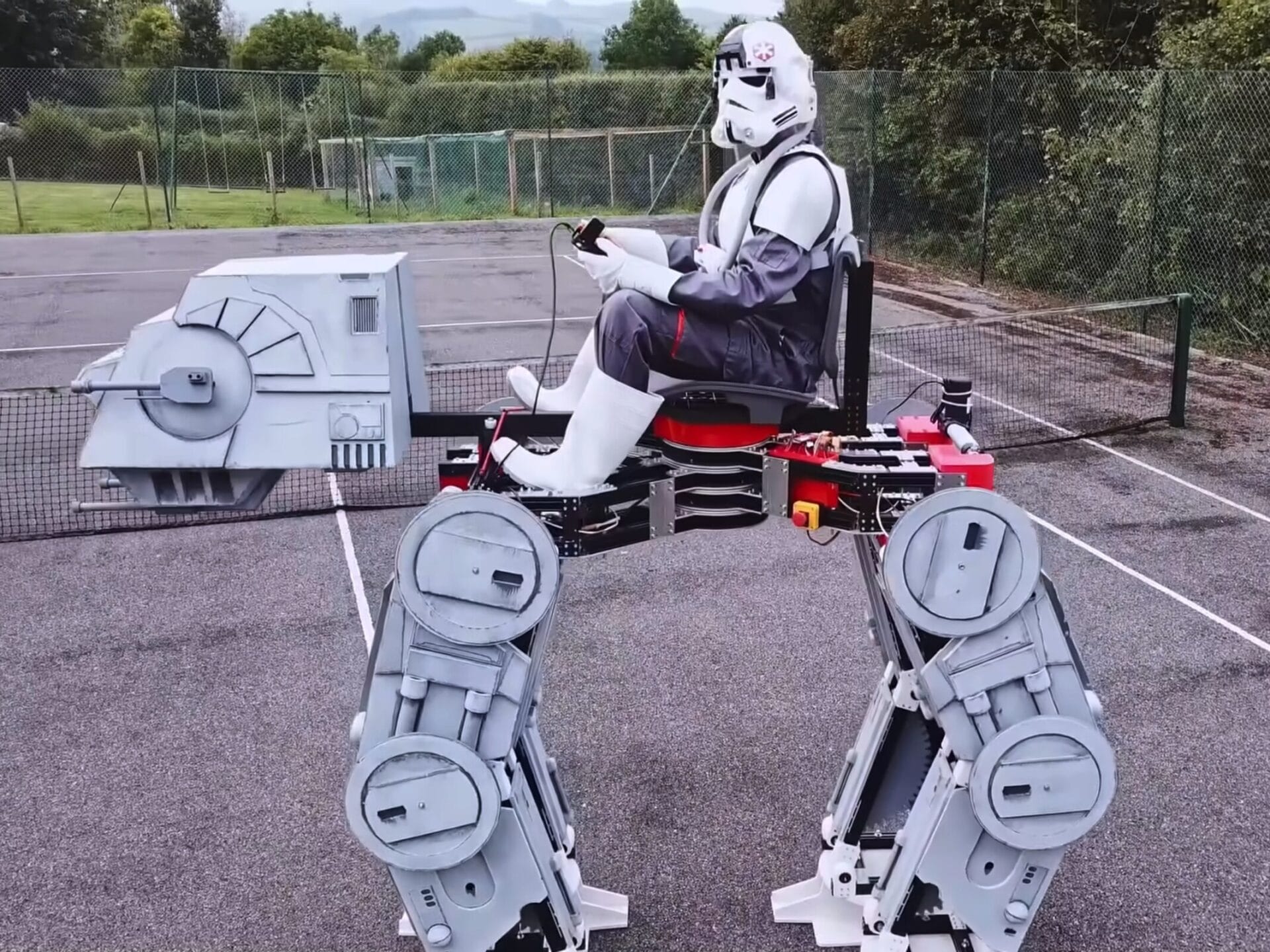2 meters tall, with a speed of about 0.06 km/h, and strong enough to support a human, the AT-AT replica created by James Bruton is a dream come true for Star Wars enthusiasts. The core of this project is a 3D printer, which Bruton utilized to manufacture most of the components himself. Alongside the printed pieces, the design incorporates aluminum profiles, engines, and electronic parts.
Design Modifications
Bruton’s version of the AT-AT does not perfectly match the original design. The robot’s knees are positioned outward, which is a departure from the film’s design but provides essential stability. The legs are powered by electric motors, which are connected via an Ethernet cable and can be controlled remotely.
Precision Control
To accurately track the position of the legs, Bruton has included a potentiometer in each leg. This device measures resistance and sends vital information back to the central control system about the leg’s position. This feature allows the AT-AT to maintain a specific movement pattern without losing balance.
Project Origins
The journey began with a small, remote-controlled AT-AT, which served as the foundation for this larger endeavor. The first YouTube video showcases the template and documents the assembly process leading up to the completion of the legs.
In the follow-up video, Bruton, dressed as a stormtrooper, demonstrates and tests the 3D-printed AT-AT in a parking lot. If the AT-ATs from "The Empire Strikes Back" had displayed this kind of speed, the outcome for the Galactic Empire would have been quite different. Nevertheless, the robot successfully carried Bruton, marking the experiment as a triumph.
For those interested in creating their own AT-AT, Bruton has made the CAD and code files available on GitHub for both the smaller and larger versions.


Leave a Reply